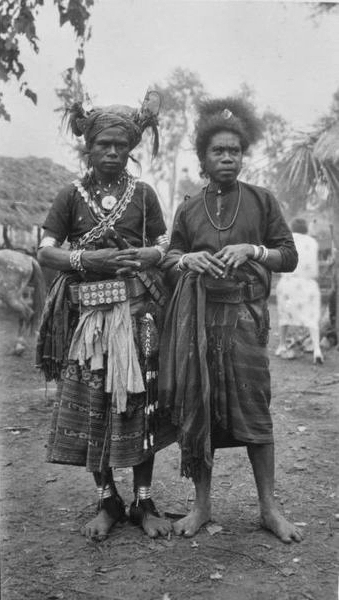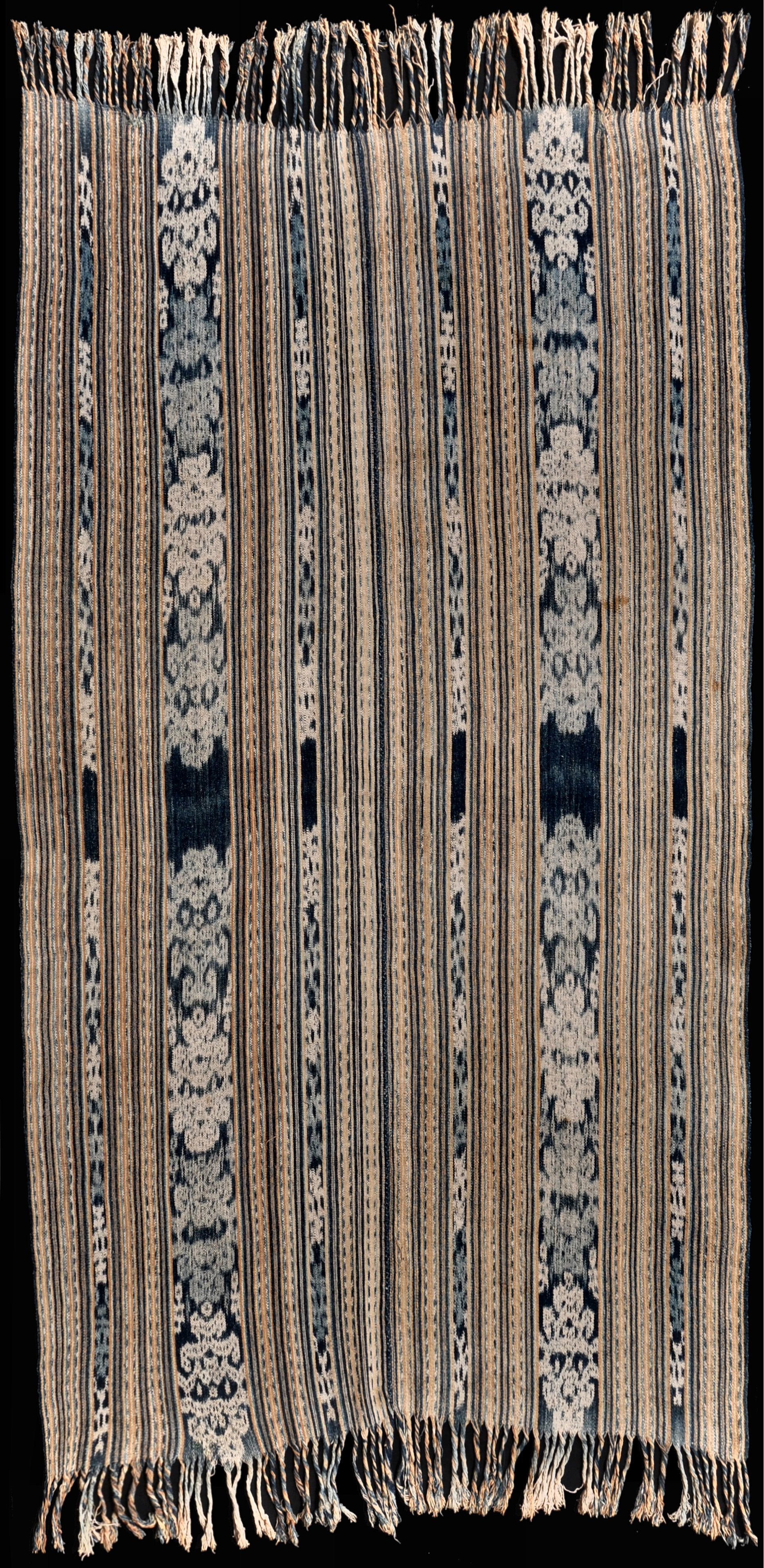| |
 mouse over to magnify mouse over to magnify
LEFT THE COLLECTION
| | | | 118 Timor, East Timor
Beti naek (men's wrap)
| | Locale: | Oecusse/Ambenu the East-Timorese exclave in West-Timor. Village in the lower elevations. Atoni people. | | Period: | 1930-1950 | | Panels: | 2 | | Design: | Beti naik (man's blanket in Dawan) decorated with bands of indigo on white ikat, alternated with bands of stripes in indigo and morinda, and narrow stripes in ochre-like pale yellow. The main motif, called kaif, represents ancestral relationships. | | Size: | 81 x 139 cm (31.8 x 54.7 in) | | Yarn: | Cotton, hand-spun, coarse | | Comment: | Rare Ambenu beti naik, from old Dutch collection. All natural dyes. Clearly used for a long period, but well preserved. Textiles from Ambenu are rare due to the enclave's isolation. Remarkably, the four indigo kaif motifs closer to the endings are well defined, whereas the others are somewhat shimmering. As they were created with the same skein of warp of threads, the effect cannot be due to misalignment, but must be intentional. Cloth shows moderate fading (vegetable yellow dye is not colourfast), and there are two tiny tears (< 1 inch) inwards from one ending, with old repairs, barely visible. Loosely twisted fringes. Lovely patina. | | Background: | Additional information in chapters on Timor and East Timor. | | Published: |
Woven Languages, 2014.
Timor: Totems and Tokens, 2019.
| | Compare: | 169 002 189 282 | | Sources: | Very similar to beti from Taiboko village in Yeager and Jacobson, Textiles of Western Timor, Plate 194, very to rather similar to Plates 192, 193 - except that ours is done purely in vegetable dyes. See also Chapter 8.4.2.2. Also very similar to our PC 002 and 169, except that the latter cloth is asymmetrical. Similar beti worn by Timorese man in formal attire on photo, below, from collection Tropenmuseum, 1938, supposedly shot on Flores ('possibly Nggela'), though no such cloth is made on the island, least of all in Nggela. (Note European woman fleeing the shot.)
 | | |
 ©Peter ten Hoopen, 2025
All rights reserved.
|
|


